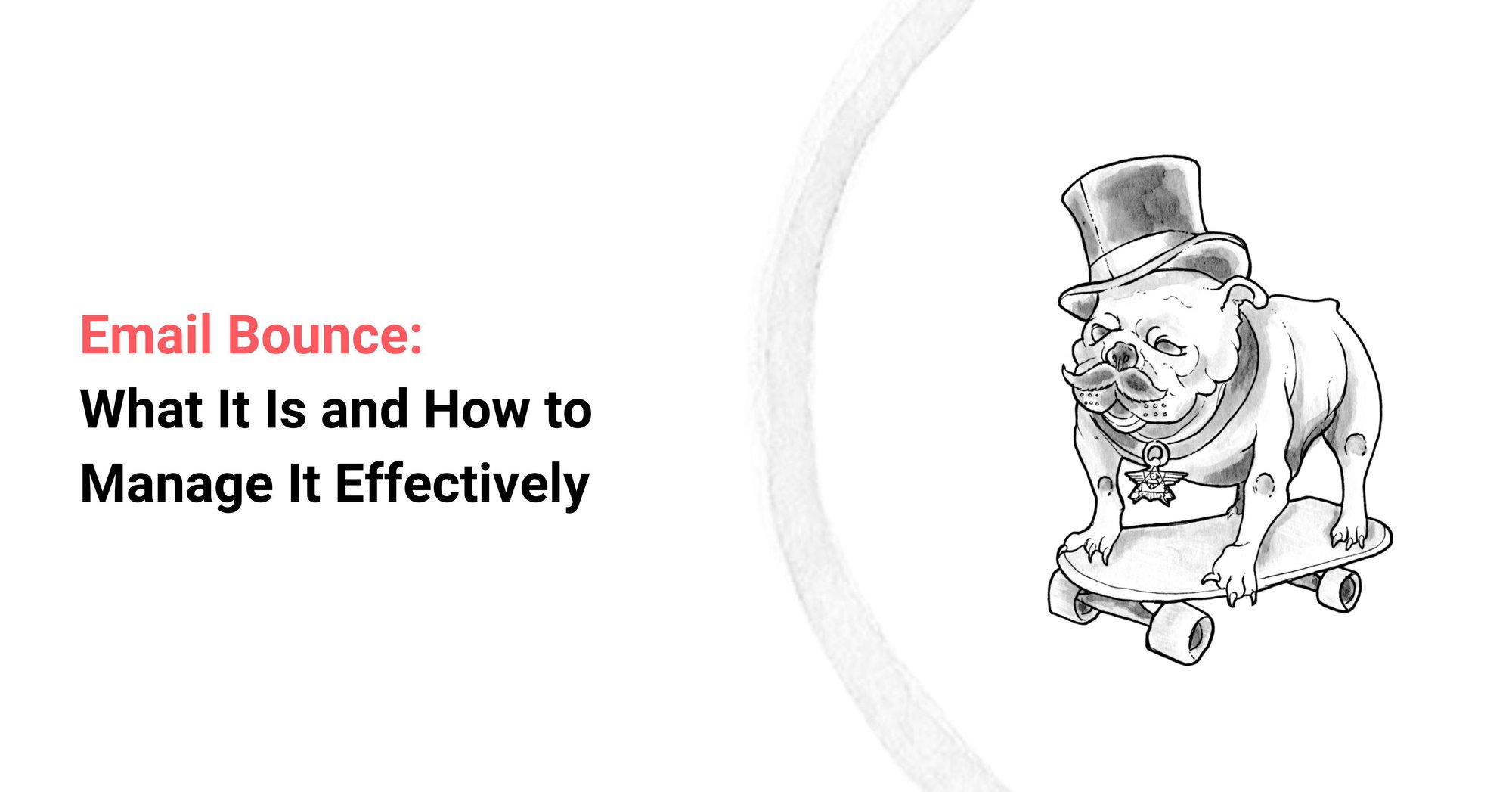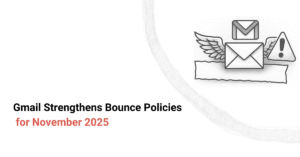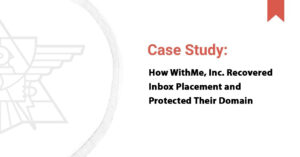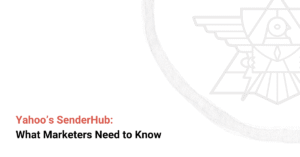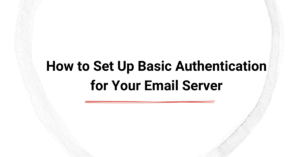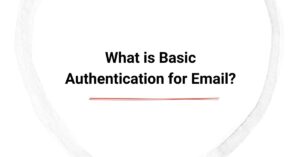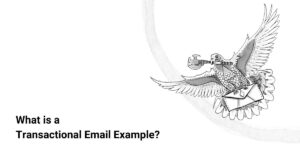Have you ever hit "send" on an email campaign, only to find some emails returned undelivered? This is called an email bounce. A bounce message means your email couldn’t reach the recipient’s inbox and was returned by the recipient's mail server. Bounced emails can negatively impact email deliverability, sender reputation, and email performance. There are two types of email bounces:
- Soft bounces
- Hard bounces
Soft bounces are temporary and may resolve automatically over time. Hard bounces are permanent and signal an undeliverable address. With the right strategies, like regular subscriber list hygiene, email verification, and tracking bounce rates, it is possible to minimize soft and hard bounces and improve your email campaign's deliverability.
TL;DR: Summarizing the Key Points
- An email bounce happens when an email isn’t delivered and returns with a failure message.
- Two main bounces exist: soft (temporary issues) and hard (permanent issues).
- High bounce rates negatively impact the sender reputation, leading to deliverability problems.
- Regular email list management and authentication protocols can significantly reduce bounces.
- Monitoring tools for bounce rates help keep your campaigns effective and on track.

What is an Email Bounce?
In the simplest terms, an email bounce occurs when an email message cannot be delivered to a recipient’s inbox and instead returns to the sender with a failure message. This usually happens when the recipient's email address is invalid, they have a full inbox, or there is a momentary server problem. Essentially, it’s the digital equivalent of a returned letter in the mail.
When email bounces accumulate, they signal to the recipient's email service provider (ESP) that your contact list contains outdated or incorrect information. This can lead email service providers to lower your sender reputation and classify more of your emails as spam. If left unchecked, a high email bounce rate can wreak havoc on your email strategy.
Types of Email Bounces
Understanding the different types of email bounces can help you evaluate why emails fail to deliver and what actions you can take to address the issue. On that note, here are the two main types of bounced emails.
Soft Bounce
A soft bounce is caused by temporary failures in email delivery, meaning the message couldn't reach the recipient’s inbox due to short-term issues. Common causes include:
- Full inboxes: If the recipient’s mailbox is full, the server can’t accept new messages.
- Server downtime: The email server may be temporarily unavailable, often due to technical maintenance or high traffic.
- Message size: If the email contains large files or attachments that exceed the recipient’s server storage limit, it may be rejected.
Typically, soft bounces are less damaging to your reputation because they’re often temporary. Many ESPs will try resending emails after a soft bounce, and often, these messages are successfully delivered on a subsequent attempt. However, if an address repeatedly soft bounces, it’s wise to consider removing it from your list, as it may indicate inactive subscribers.
Hard Bounce
A hard bounce is a permanent failure to deliver. This often occurs for the following reasons:
- Invalid email address: The address may be fake, mistyped, or no longer in use.
- Non-existent domain: The domain associated with the email address may no longer be active. This happens when users change email providers.
- Blocked sender: The recipient’s email server may have blocked your address or domain, either due to excessive spam complaints or being flagged by a spam trap.
Unlike soft bounces, hard bounces have a lasting impact on the sender reputation. They signify that the email address is permanently undeliverable, so keeping these addresses on your list can significantly harm your sender reputation over time. ESPs use hard bounce rates as an indicator of list quality. Hence, you need to regularly clean your email list to remove hard bounces and improve deliverability rates.
Why Monitoring Bounce Rates is Important
A low bounce rate helps preserve sender reputation, improve deliverability, and make the most of your marketing efforts Here are the primary reasons why tracking bounce rates should be your top priority.
- Impacts Sender Reputation and Deliverability: Bounce rates directly affect your reputation score. When email service providers notice frequent bounces from your account, they may start routing your emails to recipients' spam folders or block them altogether.
- Prevents Emails from Being Flagged as Spam: High bounce rates can indicate poor list hygiene or outdated data. ESPs see high bounce rates as a red flag and may start marking your emails as spam.
- Enhances Engagement by Targeting Active Contacts: By tracking bounces and removing inactive or invalid emails, you can reach subscribers who are more likely to engage with your email messages. This not only boosts open and click-through rates but also helps you make the most of your email marketing efforts.
Common Causes of Email Bounces
Understanding the reasons behind email bounces can help you proactively reduce bounce rates. Here are some common causes:
Invalid Email Addresses
Invalid email addresses are one of the main reasons for email bounces. These can result from:
- Typos: Mistyped emails (like “gmial.com” instead of “gmail.com”) are easy to miss.
- Outdated Addresses: Sometimes, users abandon old email addresses or change providers.
- Incorrect Formatting: If an email address is missing an “@” symbol or includes prohibited characters, your email will bounce.
Recipient Server Issues
Occasionally, the recipient’s email server may face temporary issues that cause a soft bounce. Common server-related reasons include:
- Server Downtime: If the recipient’s email server is down for maintenance, your emails won’t be delivered.
- High Traffic or Overloaded Servers: During high traffic periods, some servers may reject new inbound emails temporarily.
Spam Filters
Spam filters may flag your emails, leading to soft bounces. This can happen when:
- Emails Contain Trigger Words: Words commonly associated with spam, like “Free” or “Act Now”, may increase the likelihood of your emails triggering a spam filter.
- High Image-to-Text Ratio: Spam filters may reject incoming emails with excessive images and minimal text.
- Past Engagement Metrics: Poor engagement history can also prompt spam filters to block your email messages.
How to Reduce Email Bounce Rates
You can reduce bounce rates by following email deliverability best practices. Here are three tried and tested strategies for minimizing hard and soft bounces.
Maintain a Clean List
Regularly cleaning your mailing list is one of the simplest ways to reduce bounce rates. You can:
- Remove Inactive Contacts: Identifying and removing contacts who haven’t engaged with your emails in a long time reduces the risk of email bounces.
- Update Outdated Addresses: If you notice certain addresses bouncing repeatedly, add them to your suppression list.
- Use List Validation Tools: Tools like ZeroBounce or NeverBounce can help you verify email addresses and prevent bounces.
Use Double Opt-In
A double opt-in process requires new subscribers to confirm their email address. This ensures each address is valid, belongs to a real person, and the subscriber is genuinely interested in hearing from you. Here is how double opt-in works.
- Step 1: After entering their email, subscribers receive a confirmation message.
- Step 2: They must click the embedded link in the email to confirm their subscription.
Authenticate Emails
Email authentication protocols help email senders build trust with ISPs, which is essential for maintaining a healthy sender reputation. Using protocols like SPF (Sender Policy Framework), DKIM (DomainKeys Identified Mail), and DMARC (Domain-based Message Authentication, Reporting, and Conformance) signals to ISPs that your emails are legitimate and authorized. Here is a quick overview of the top three email authentication protocols used today.
- SPF: Specifies which servers can send emails on behalf of your domain, helping prevent spoofing.
- DKIM: Adds a unique signature to each email, verifying its authenticity.
- DMARC: Aligns SPF and DKIM to provide extra protection against phishing attacks.
Tools to Monitor and Manage Email Bounce Rates
Here are three powerful tools that provide analytics and actionable insights to help improve your deliverability.
Mailgun
Mailgun is a robust email delivery platform that provides useful analytics and deep insights into bounce rates. It enables you to monitor deliverability metrics closely, helping you identify issues as they arise. With real-time data and detailed reports, you can spot patterns, like frequent soft or hard bounces, and take steps to address them before they impact your reputation.
GlockApps
GlockApps specializes in email testing and tracking, offering a clear view of your bounce rates through detailed reports. The platform tests your emails for potential spam triggers, providing insights into how ESPs view your messages. GlockApps is particularly useful for pinpointing problem areas in your email campaigns, allowing you to make adjustments that reduce bounces and increase engagement.
Brevo (Formerly Sendinblue)
Brevo provides a comprehensive suite for email marketing and deliverability monitoring, including tools to track bounce rates. It offers actionable insights on list quality and email performance, making it easier to identify addresses that may be impacting your bounce rates. With Brevo, you gain insights on both individual campaigns and your overall email health, helping you maintain a high-quality list that minimizes bounces and maximizes deliverability.
Minimize Bounce Rates and Improve Email Deliverability with Expert Guidance
Monitoring and managing email bounce rates is essential for successful email marketing. By carefully tracking these metrics, you can improve your email deliverability and protect your sender reputation. By differentiating between soft and hard bounces, you can manage email lists accurately. This helps minimize email bounces and keep your audience engaged. Regular list cleaning, combined with authentication protocols, can further reduce bounce rates, ensuring your messages reach the target audience.
Want to reduce your email bounce rate? Start with our free deliverability check today and improve your bounce rate!

